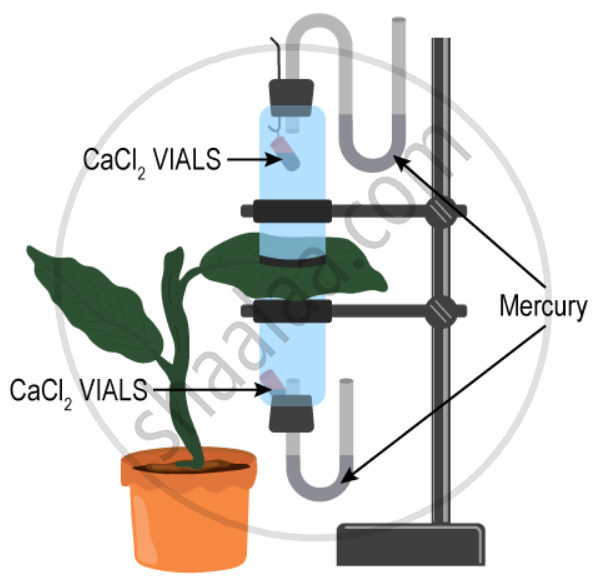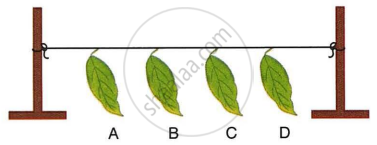Advertisements
Advertisements
प्रश्न
Given ahead is the diagram of an experimental set up to study the process of transpiration in plants. Study the same and then answer the question that follow:

Why are glass slides placed over the dry cobalt chloride papers?
उत्तर
Glass slides are placed over the dry cobalt chloride papers so as to retain the strips in their position.
APPEARS IN
संबंधित प्रश्न
Name the following:
openings on the stem through which transpiration occurs.
Given ahead is the diagram of an experimental set up to study the process of transpiration in plants. Study the same and then answer the questions that follow:

Is the experimental leaf a monocot or a dicot? Give a reason to support your answer.
The apparatus shown in the following diagram is Garreau’s potometer designed to demonstrate unequal transpiration from the two surfaces of a dorsiventral leaf. Before keeping the leaf in between the cups, anhydrous calcium chloride (CaCl2) contained in two small vials were weighed and placed in both the cups. The ends of the cups were closed with corks through which two mercury manometers were connected. After few hours, CaCl2 vials were taken out and weighed again.

What is the purpose of using a manometer?
What is the advantage of wilting to a plant?
Differentiate Between Cobalt chloride paper and Goat’s bladder.
Name the following:
A potometer is an instrument for measuring the rate of the most transpiration in a herbaceous plant like Balsam occurs through which part.
Write the functional activity of the following structure:
Stomata
The upper layer of mesophyll in a leaf consists of elongated ground tissue called ______.
The given figure represents an experiment:

- Leaf A was coated with grease on both surfaces.
- Leaf B was coated with grease on the lower surface.
- Leaf C was coated with grease on the upper surface.
- Leaf D was left without any application of grease. All four leaves A, B, C and D were left in a room for about 24 hours.
- Which leaf dries first? Give reason.
- Which leaf dries last? Give reason.
